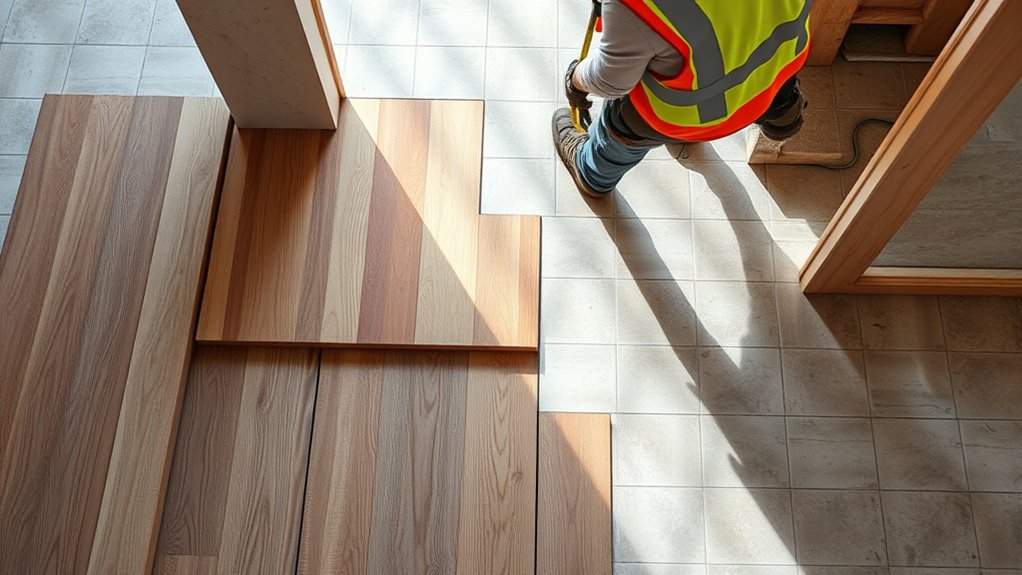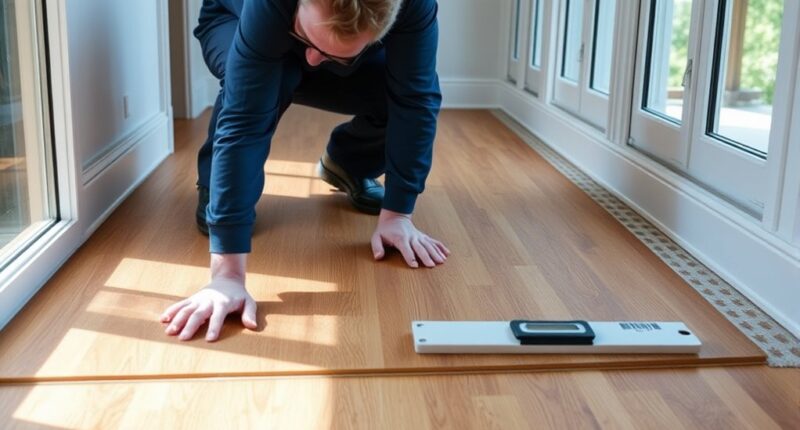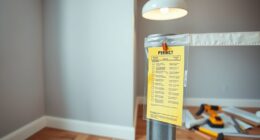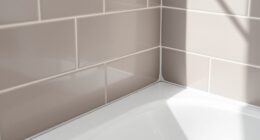When working around existing floors and levels, start with a detailed assessment of structural load-bearing elements, including beams, joists, and supports, to prevent compromising stability. Use precise measurement tools to map elevations and identify potential conflicts early. Reinforce supports as needed, employing engineering standards for load capacity. Carefully cut and level surfaces to guarantee fit and safety, while monitoring ongoing shifts or settlement. Continuing with these steps ensures a seamless, secure integration without risking structural integrity.
Key Takeaways
- Conduct detailed assessments of existing floor levels and structural supports before planning modifications.
- Use precise measurement tools to map elevations and identify potential conflicts early in the process.
- Reinforce or adapt existing supports to accommodate new construction elements without compromising stability.
- Employ accurate cutting and leveling techniques to ensure seamless integration with existing floors.
- Monitor structural integrity throughout construction, adhering to safety standards and documenting all modifications.

When renovating or constructing in existing structures, working around existing floors and levels requires careful planning and precise execution. You must first conduct a thorough assessment of the current building layout, paying close attention to structural load-bearing elements, floor thicknesses, and levels. Accurate measurements are essential; utilize laser scanning or precise tape measures to map out existing elevations and identify potential conflicts. This initial step guarantees that modifications integrate seamlessly without compromising structural integrity or functionality.
Next, evaluate the compatibility of new construction elements with existing floors. Determine whether existing supports, beams, and joists can accommodate additional loads or if reinforcement is necessary. This involves reviewing structural drawings or conducting load testing where documentation is unavailable. When adding new levels or modifying current ones, you must verify that load paths are maintained and that the existing foundation can sustain the increased weight. Reinforcements, such as steel beams or additional framing, should be incorporated based on these assessments, following engineering standards.
In terms of integration, precise cut lines and joinery are critical to fit new materials around existing floors. You should employ specialized tools like plasma cutters or reciprocating saws to make clean, accurate cuts that minimize disturbance to existing structural elements. When raising or lowering levels, consider the impact on doorways, staircases, and other transitions. Leveling adjustments often require shimming or packing under existing floors, which must be done with high-precision leveling devices to ensure uniformity and safety.
Managing differential settlement is another concern when working around existing structures. You need to identify areas where floors may have sagged or shifted over time, which can cause uneven surfaces. Address these issues through targeted underpinning or localized reinforcement, always adhering to structural engineering principles. When installing new flooring over existing surfaces, proper preparation is crucial: remove debris, repair any damaged sections, and ensure a flat, stable base. Use appropriate underlayment materials to bridge minor irregularities and enhance load distribution.
Throughout the process, strict adherence to safety protocols and building codes is essential. You must coordinate with structural engineers, architects, and inspectors to validate modifications and ensure compliance. Document all alterations meticulously, including measurements, reinforcement details, and material specifications. This documentation not only facilitates future maintenance but also serves as proof of compliance with regulatory requirements. Working around existing floors and levels demands a disciplined approach, combining detailed analysis, precise execution, and ongoing quality control to achieve a successful, structurally sound result. Additionally, incorporating sensor technology can help monitor for potential issues like settlement or shifting during construction.
Frequently Asked Questions
How Do I Handle Uneven Floor Heights During Renovation?
You should first identify the level difference using a laser level or a long spirit level. Then, plan for transition strips, ramps, or step modifications to guarantee safety and smoothness. If necessary, reinforce subflooring to support added transitions. Precise measurements and proper material selection are essential to maintain structural integrity and aesthetic consistency. Always verify local building codes for specific requirements related to floor height variations.
What Materials Are Best for Leveling Existing Floors?
Think of leveling your floor as smoothing out a rough sea. Use self-leveling concrete for quick, seamless results on concrete subfloors, ensuring it flows into all corners. For wooden subfloors, consider plywood or cement-based patching compounds to fill voids and create a flat surface. Underlayment boards, such as cement fiber or fiberboard, provide extra stability. Always choose materials compatible with your existing floor type for ideal adhesion and durability.
How Can I Minimize Dust When Working Around Existing Floors?
To minimize dust when working around existing floors, you should use dust containment methods like sealing off the work area with plastic sheeting and installing negative air machines with HEPA filters. Wet cutting techniques reduce airborne dust, and employing dust extraction attachments on power tools further limits particles. Always wear appropriate personal protective equipment, such as masks and goggles, and clean the area frequently to prevent dust buildup.
What Permits Are Required for Modifying Existing Floor Levels?
You need to obtain building permits from your local planning or building department before modifying existing floor levels. Submit detailed plans and structural calculations for review. Permits guarantee compliance with safety codes and zoning regulations. Failure to secure proper authorization can lead to fines or required undoing of work. Always verify specific requirements with your jurisdiction, as they vary by location and scope of work.
How Do I Ensure Safety When Working on Old, Uneven Floors?
You guarantee safety on old, uneven floors by conducting a thorough inspection to identify weak spots, loose boards, or protrusions. Use appropriate personal protective equipment, such as steel-toed boots and eye protection. Stabilize the surface with shims or temporary supports where necessary, and work slowly to maintain balance. Regularly check for signs of structural compromise, and consult a structural engineer if you detect significant issues.
Conclusion
Just as a skilled sailor navigates shifting tides and unseen obstacles, you can expertly work around existing floors and levels. By understanding structural nuances and employing precise techniques, you steer your project smoothly through potential challenges. Every measurement, cut, and adjustment acts as a compass, guiding you toward a seamless finish. With careful planning and technical accuracy, you guarantee your renovation remains stable and aligned—transforming complexity into a well-executed masterpiece, much like charting a clear course through unpredictable waters.








